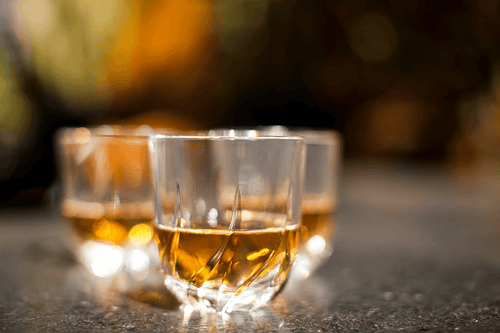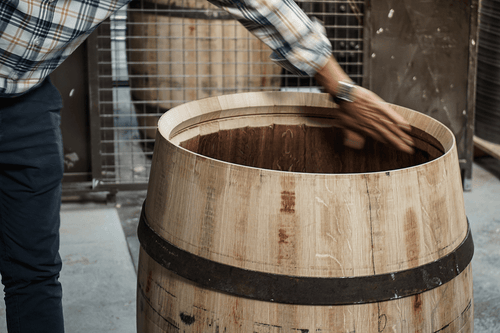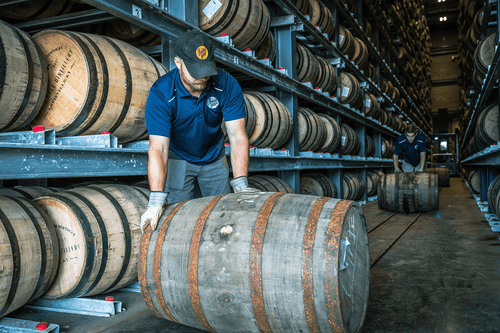Triple Malt Bourbon Explained
TRIPLE MALT BOURBON
EXPLAINED
The term "malt" is a fairly common word that most have heard, but what does it mean and how does it describe the nuances of what is known as a “triple malt bourbon?”...

Malting, in terms of "triple malt bourbon" is the method of germinating or sprouting grain to a certain level and then stopping the germination process before adding it to the mash bill. The germination process is performed under strict tolerances with meticulous methods to ensure it is stopped at precisely the same point each time. After the grain has reached the correct sprouting point, it is dried carefully with great attention to detail. It must be precisely done because any deviation can impact the flavor profile.
Why is malting needed to make bourbon? Malting grains produce enzymes (α-amylase, β-amylase) necessary to convert the starch in the grain to sugars. These sugars are then fermented into alcohol. The starches will convert the grains into the fermentable sugars: trisaccharide maltotriose, disaccharide maltose, monosaccharide glucose, and higher-developed sugars called maltodextrins.
Another group of enzymes called proteases is also produced during the malting process. Proteases break down complex proteins in the grains into a protein structure that's more easily digestible by the yeast during fermentation. Ethanol is created as a by-product of fermentation, which is the alcohol we end up drinking. The malting process is halted at a certain point to produce a ratio of starch-to-enzymes favorable to the distilling process.
Other sugars are also naturally present within the malted grain in the form of sucrose and fructose. These sugars aren't created by malting but are part of the grain itself. These sugars are fermentable and can add a nice twist and complexity to the finished whiskey.
Malting grains does impact the flavor profile, so other grains used as part of the mash bill may be malted, or they may not: It all depends on the creativity and craft of the distiller.
Understanding How the Word Malt Is Used in Whiskey
The word malt in the (Irish) Scotch whiskey world is in the phrase single malt, which only actually applies to scotch whiskey. Single malt has legal requirements for its usage in Scotland, just as bourbon does in the U.S. What single malt means in a general sense is that it is only produced, aged, and bottled in a single distillery using barley as the main malted grain, if not the only one. Terms like double and triple have also been used casually in the Scotch world to describe blends from precisely two or three distilleries, respectively.
With most people being familiar with the usage of malt about single malt Scotch, it generates confusion when applying it to a bourbon. When describing triple malt bourbon, the phrase has nothing to do with how many distilleries the whiskey comes from, how long it was aged, or how it was distilled. Instead, the “triple malt” in triple malt bourbon refers to the fact that three malted grains were used in the bourbon mash bill.
In addition to the legally required 51% corn, almost all distillers use barley. If they omit traditional barely, they may opt for using malted barley, as it is necessary for the fermentation process. In the case of a triple malt bourbon, two other malted grains will be included in the mash bill in addition to malted barley.
A mash bill might be 70% corn, 10% malted wheat, 10% honey malted barley, and 10% malted barley. That would be an excellent example of a triple malt bourbon. In fact, one such bourbon exists, and has won many awards. It is produced by Rabbit Hole Distillery in Louisville, KY. The expression name is “Cavehill Kentucky Straight Bourbon Whiskey.” The expression moniker for this bourbon is “four grain, triple malt” which means it is a four grain bourbon (corn, malted wheat, honey malted barley, malted barely) and three of those four grains are malted – thus the “triple malt” descriptor for this exquisite bourbon.
Producing a triple malt bourbon, with the malted grains germinated to just the right point, dried to perfection, and then combining with the other grains, malted or not, at the right time in the right amount is as much an art form as it is a science. Everything must be meticulously controlled to produce consistent results.
It's far more than simply figuring out the percentage of each grain, ferment, age, and viola: You have triple malt bourbon. However, it is worth it, as the end result offers a flavor profile and aromatic notes like no other bourbon.
Types of Malted Grains
There is no standard mash bill for a triple malt bourbon. It is up to a distiller to decide what percentages to tweak to achieve a true work of art. If a distiller uses the legal minimum of 51% corn in a triple malt bourbon, there is 49% of limitless possibility left over. You can imagine the tens of thousands of combinations possible when a distiller is experimenting with individual percentages in a triple malt bourbon mash bill.
Common malting techniques and names for wheat and barley grains are:
- Honey malt
- Chocolate malt
- Caramel malt
In fact, there are dozens and dozens of different malting techniques that can be applied when creating a triple malt bourbon. Most people have heard of a pilsner beer. The beer got it’s name from the “pilsner malted wheat” in the brewing process.
Both bourbon and beer share malting techniques. There are more beer types than necessary to list here, from lagers and stouts to IPA’s. It is fortunate that certain distilleries are experimenting with various malting techniques to stand out from the over-saturated “basic” bourbon market today.
It would be boring if all beer was lager. It is just as boring if all bourbons are a various combination of the same three common cereal grains with no deviation. Luckily, there is Cavehill Triple Malt Bourbon, a true one-of-a-kind Kentucky Straight Bourbon Whiskey that is both a four grain bourbon and a triple malt bourbon.






















